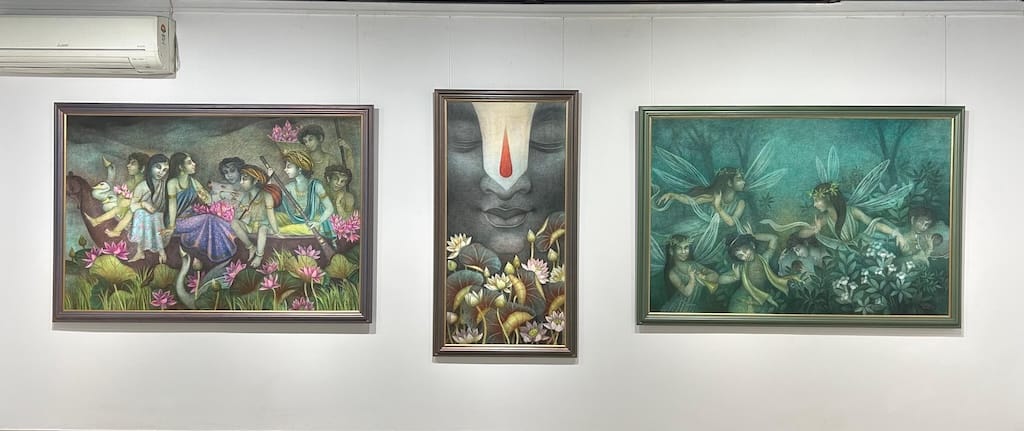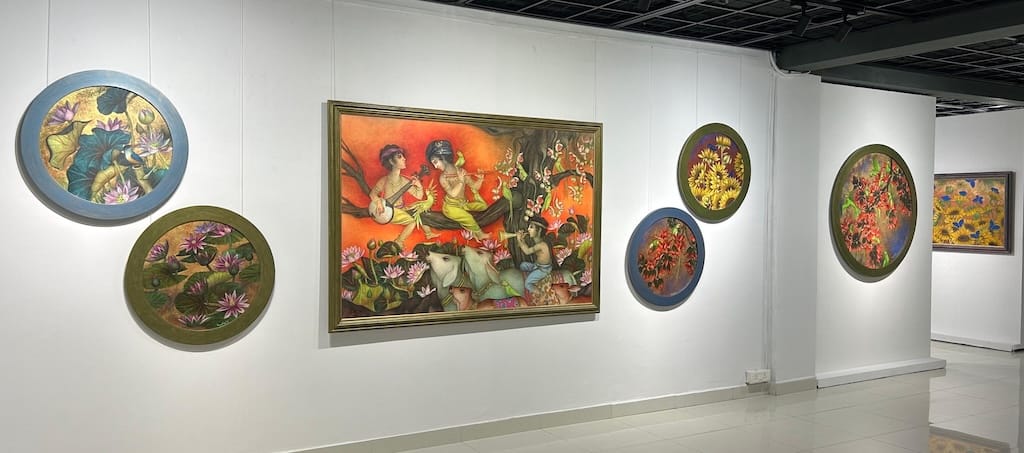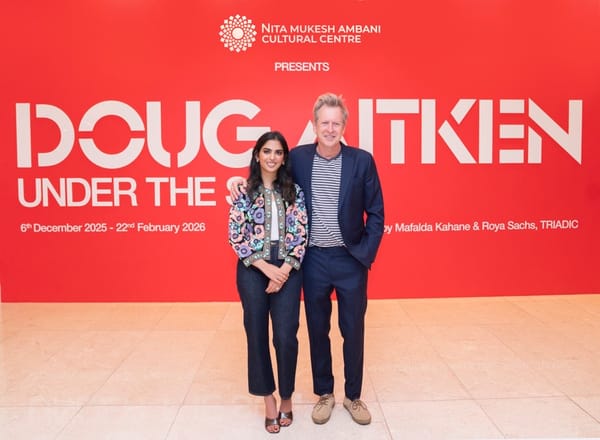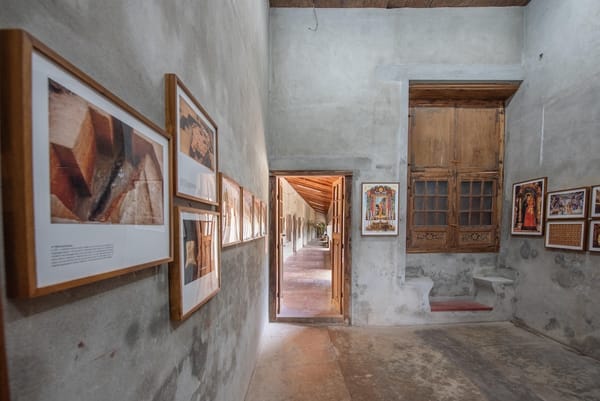Bratin Khan and Anupama Alias Anil at Kalakriti Art Gallery, Hyderabad
Bratin Khan and Anupama Alias Anil explore the inner landscapes of memory, myth, and womanhood in 'Mirror of Vision' and 'A Room for Refuge', on view at Kalakriti Art Gallery, Hyderabad, until November 5, 2025.

At Kalakriti Art Gallery, Mirror of Vision and A Room for Refuge bring together two artists—Bratin Khan and Anupama Alias Anil—whose works explore the interior landscapes of human experience through differing yet complementary lenses. Mirror of Vision unites Bratin’s luminous tempera canvases, while A Room for Refuge reflects Anupama’s layered exploration of womanhood, vulnerability, and the shifting contours of selfhood.

Born in Balurghat, West Bengal, Bratin Khan trained in the Bengal tradition, absorbing its lyricism and quiet spiritualism. His works often draw from memory, nature, and inner vision. “My perception of nature is not only from my external observation but from an insightful interiority of my vision,” he explains. “I believe a flower doesn’t have to be distorted to give it an artistic status; rather, the artist should procure the original impact a flower has in nature on his canvas.” His paintings translate memory into a living abstraction—one where “the foggy twilight through the bamboo groves” or “the tempered sound of chirping crickets” become fragments of a remembered cosmos, reassembled in luminous balance.

Tempera, a medium integral to Bratin’s practice, becomes both material and metaphor. “It has a great role in generating the luminous and membranous realism of my thoughts,” he says. “The coarser texture of the canvas is fabricated with the overwhelming sensibility of aesthetic and quite a maternal fabrication—the way a mother invokes the formation of a fetus in her womb.” For him, tempera is not merely a technique but a “way of life,” one that “helps me achieve a radiographic way of developing my painting, living and reliving it uniquely.”
While his works often appear mythical, Bratin resists literal association with folklore. “My paintings are deeply rooted in a monastic condition which viewers depict as mythical,” he notes. “Mythology is a condition of immense intensity. It’s a mood of reclusion and sacramental rite; it’s a worshipping of beauty.” These qualities converge in his radiant figures—his Golden Purushas—who embody the artist’s search for spiritual equilibrium amid natural harmony.

For Anupama Alias Anil, whose artistic language moves fluidly between painting, sculpture, and assemblage, the feminine body becomes a vessel of memory and reflection. Born in Kerala and based in Chennai, she creates works that explore the “transitional, in-between phases” of womanhood. “Through my paintings, as I move through the transitional states that encompass women’s lives, I contemplate where I am, and simultaneously, how and where many women were during different stages of their lives,” she says. “Beneath the layers of courage and self-reliance are layers of anxiety—and beneath that, sorrow. Within this, I attempt to find a balance between identity and vulnerability.”

Her process often begins intuitively, refined through technical and emotional reflection. “For certain ideas, a clarity emerges early on that they require specific colour tones or particular poses,” she explains. “When talking about the dimensions of memory, I anticipate the possibilities of layers—like memory itself—being placed one on top of the other, or revealing themselves through each other.”
Autobiographical elements run through her work, which navigates between individual and collective experience. “From the very beginning of my artistic practice, I have journeyed through the ‘self’ to reach myself, and from there, outwards to the surroundings,” she reflects. In her Untitled work, she reimagines memories emerging from a wooden trunk—a metaphor for lineage and inheritance. In Island of Hope, masks symbolize transformation and renewal. Her Interlaced Journey captures the simultaneous act of observing others and the self, while landscapes devoid of human figures echo her belief that “I exist in the distances without a body, and that I am a part of the universe, and vice versa.”

Space, for Anupama, is an emotional echo. “I view the setting as a support system for the idea that the character wishes to convey,” she says. “Water represents a vast flow of possibilities: through its transparency, like a clear view, or like the depth extending down from the surface.” Such motifs connect the private to the universal, mirroring women’s lives through domestic and elemental metaphors: windows, reflections, and quiet immersion.
Reflecting on the two exhibitions, gallerist Rekha Lahoti notes how both artists embody Kalakriti’s evolving vision for contemporary art in South India. “It is a proud moment to host artist Bratin Khan’s first solo exhibition with us,” she says. “His practice, rooted in tradition yet evolving with a contemporary sensibility, resonates deeply with our vision.” Of Anupama, she adds, “From being our scholarship artist at Jamia Millia Islamia, New Delhi, to pursuing a French residency, her growth has been remarkable. This show has been carefully planned, and we are eager to see the city’s response to this significant debut.”

Together, Bratin and Anupama’s works converse in silence. His figures, suspended between reverence and radiance, and her protagonists, poised between fragility and resilience, share an inner luminosity. Both artists transform memory into matter—Bratin through the layered glow of tempera, Anupama through the tactile strata of pigment and form. Their exhibition is less a dialogue of opposites than a shared meditation: an act of remembering, reimagining, and becoming.
Mirror of Vision and A Room for Refuge continue at Kalakriti Art Gallery, Hyderabad, until November 5, 2025.





